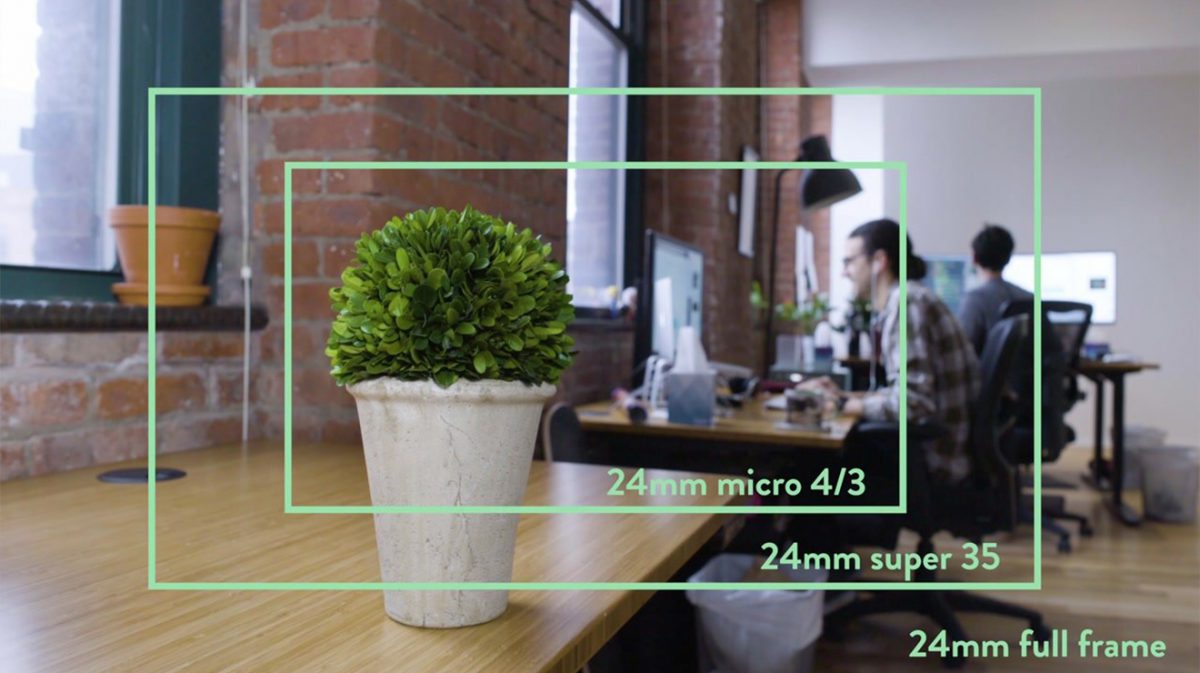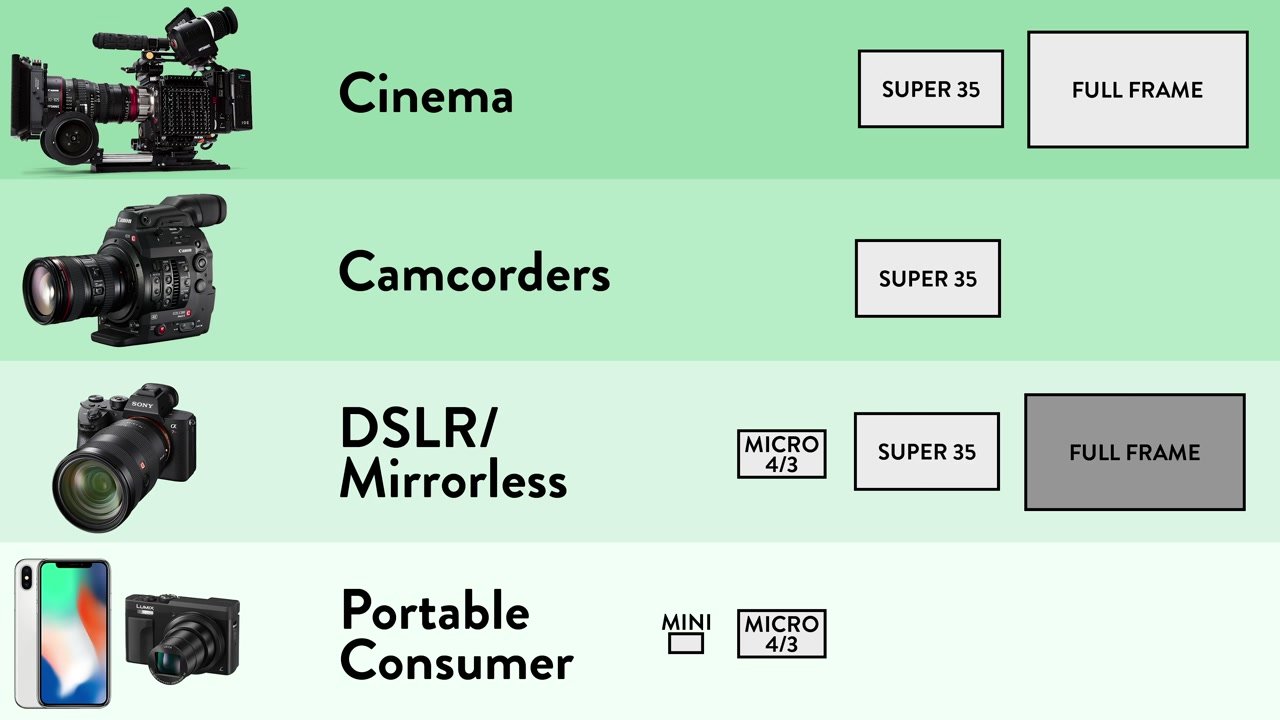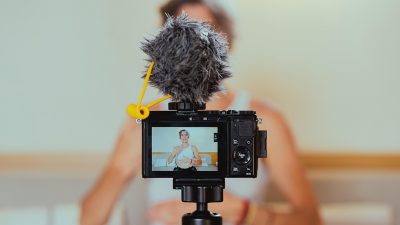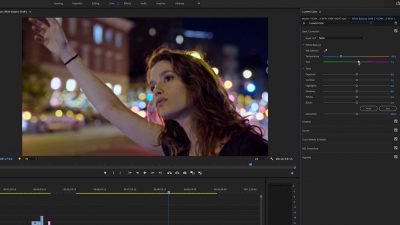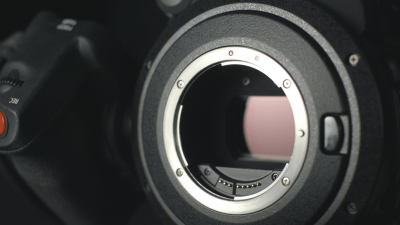Your iPhone shoots 4K, and so does a $50,000 cinema camera. So, what’s the difference? Is all 4K created equal?
The plain and simple answer is a definite NO. As Nick LaClair explains in this episode of our How To Video: Camera series, a lot of the difference in footage quality comes down to the role sensors play in processing visual information. Keep reading for a deep dive into how camera sensor size impacts everything, from depth of field and the size of the frame to the level of noise in your image.
Making Sense of Sensors
A camera sensor is the part of the camera that converts whatever you see through the viewfinder or monitor into a digital image. Basically, a sensor captures light entering the lens and converts it into a tiny electronic signal that the camera’s software can use to generate an image.
Each image constitutes a single frame of video. A second of video contains multiple frames. The exact number depends on your camera’s setting, typically anywhere from 24 – 240 frames per second.
In this video, Nick LaClair breaks down the differences between sensors in a range of camera options, and provides guidance on selecting the right camera and sensor for your project.
Deep Dive on Sensors
In order to understand the difference the sensor size makes to your image quality, you also have to understand two key concepts: depth of field, and effective focal length.
Sensors and Depth of Field
Depth of field refers to the camera’s ability to focus within the frame.
A shallow depth of field means that the subject will be in focus, while the background will appear blurry. This can lend a beautiful and professional look to your footage. It gives a cinematic feel to your shot.
A deep depth of field enables you to capture more of the image in focus. For instance, if your subject is in front of something important you want the audience to be able to see, you’ll need a deep depth of field to keep it in focus.
Generally speaking, the larger the sensor, the shallower the depth of field at any aperture. Aperture is a camera setting that controls how much light hits the sensor.
When working with a large sensor with a correspondingly shallow depth of field, you need to close down the aperture in order to deepen the depth of field. Because that reduces the amount of light hitting the sensor, you need to add lighting to your shot to compensate for the aperture setting.
This increases the complexity of your production significantly. In certain circumstances, selecting a camera with a smaller sensor would be a better choice.
Effective Focal Length
Effective focal length is created by the image cropping that results when you combine a specific lens with a specific camera. The same lens can be a wide on one camera or a telephoto on another depending on the size of the sensor. Let’s break down how that works.
Basically, the smaller the sensor, the wider the lens you need to capture the same scene as a full frame camera. And, the wider the lens, the deeper your depth of field at any given aperture. Put another way, the longer the focal length of the lens, the shallower the depth of field, and the more compressed the background. Got it?
Here’s an example that illustrates the point. The kit lens included with many basic consumer cameras varies according to the sensor size in order to deliver a similar range, from a wide angle to a zoomed in shot.
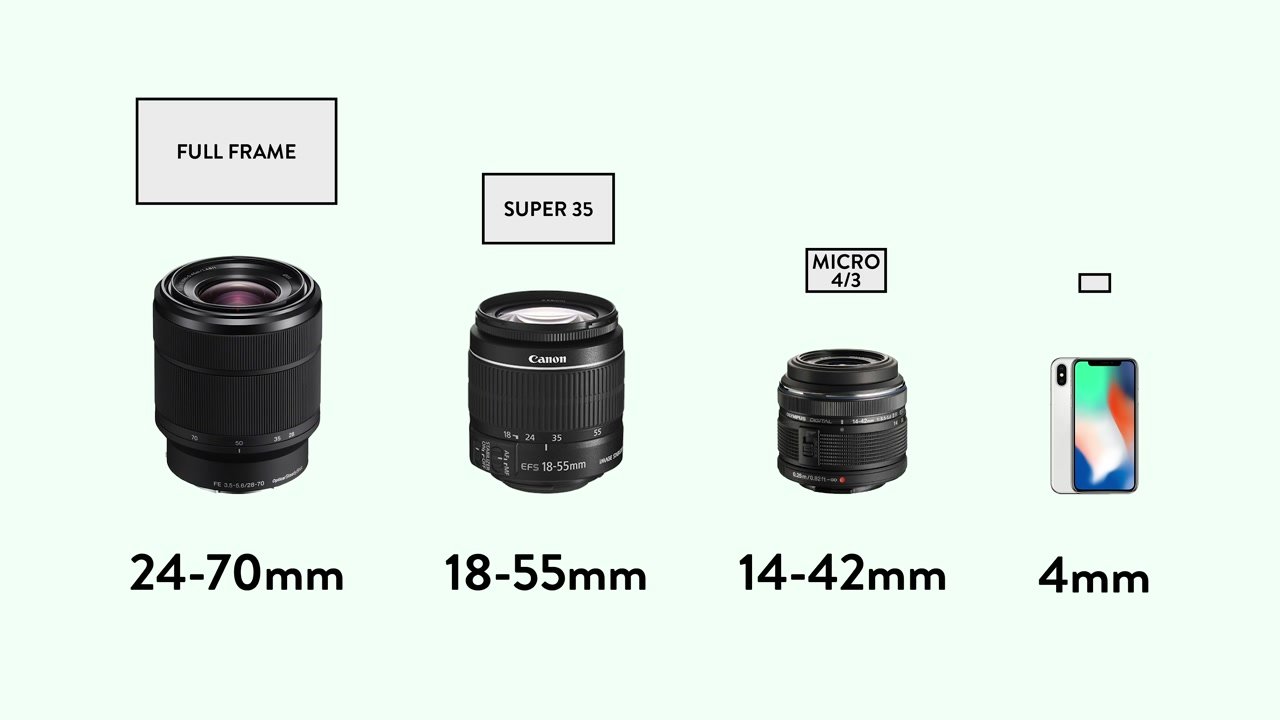
Because of the image cropping that occurs, the combination of each lens with each sensor size gives you a similar ability to shoot a wide angle or to zoom in on a subject. The effective focal length is similar across these pairs.
Which Sensor is in Which Camera?
Today, there is greater variation in sensor size within price tiers than there used to be. Here’s how sensors typically differ across different types of cameras:
In the image above, the full frame sensor is grayed out for the DSLR / mirrorless cameras because they don’t truly offer full frame sensors. Although this setting is available on some consumer models, they have to “cheat” to record video on a full frame sensor. As a result, there is a trade-off in terms of overall image quality.
At the bottom of range, portable consumer cameras typically have small sensors, which result in a lower quality image, and less control over the depth of field. At the very top, you’ll find full frame cinema cameras, which produce incredibly high quality images, with plenty of control over depth of field.
However, there is also a significant difference in terms of the level of technical expertise required to operate these different cameras, as well as the price. As a general rule, the larger the sensor, the higher the price, and the more complex it is to film with the camera.
Selecting a Sensor Size
What size sensor is right for your project? It all depends on your budget, and the level of control required over your depth of field.
Considering Budget
Budget is clearly a factor when selecting a camera, and larger sensors are associated with higher prices. Think through the type of investment you’re willing to make in video. Do you plan to produce high quality video on a regular basis? If so, it might be worthwhile to invest in a camera with a larger sensor since it will provide more flexibility and value over time.
However, it’s certainly true that sometimes, the best camera is the one you already have – usually your phone. It all comes down to what you’re looking to achieve with video. It’s possible your audience cares more about your ideas than whether your footage looks truly polished.
Factoring in Depth of Field
If your shoots vary significantly, you likely need more control over depth of field. That’s because you’ll need the ability to selectively focus and adjust to different settings.
On the other hand, if you’re mainly filming very simple videos with a fixed perspective, depth of field might not be a significant factor in your decision. There are even certain scenarios where a smaller sensor can even be advantageous.
For example, say you’re shooting a corporate presentation. You’ll probably need to keep the presenter in focus as well as the visual aids behind them. An iPhone would capture everything clearly.
As mentioned above, on a professional camera with a big sensor, you’ll need more light to close down the aperture enough to get a deeper depth of field. That means more equipment, setup time, and light. Otherwise you risk losing focus on important parts of the scene.
After weighing your budget and production needs, you should be able to select an optimal sensor size. Of course, whether you need other bells and whistles in a camera is a different matter.
Understanding camera sensors is key to understanding the difference between tiers of camera models, as well as the difference in the image quality they can produce. If you have questions about camera sensors, please share in the comments below.
SproutVideo supports UltraHD video playback – up to 8K! We also accept file sizes up to 100 GB. So, bring on the high quality footage and let your videos shine with a free trial.



